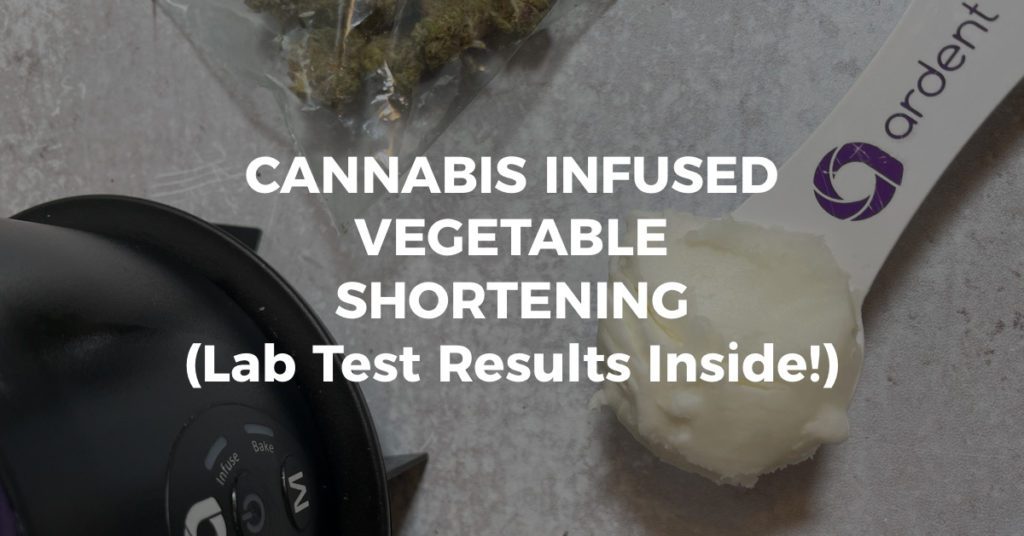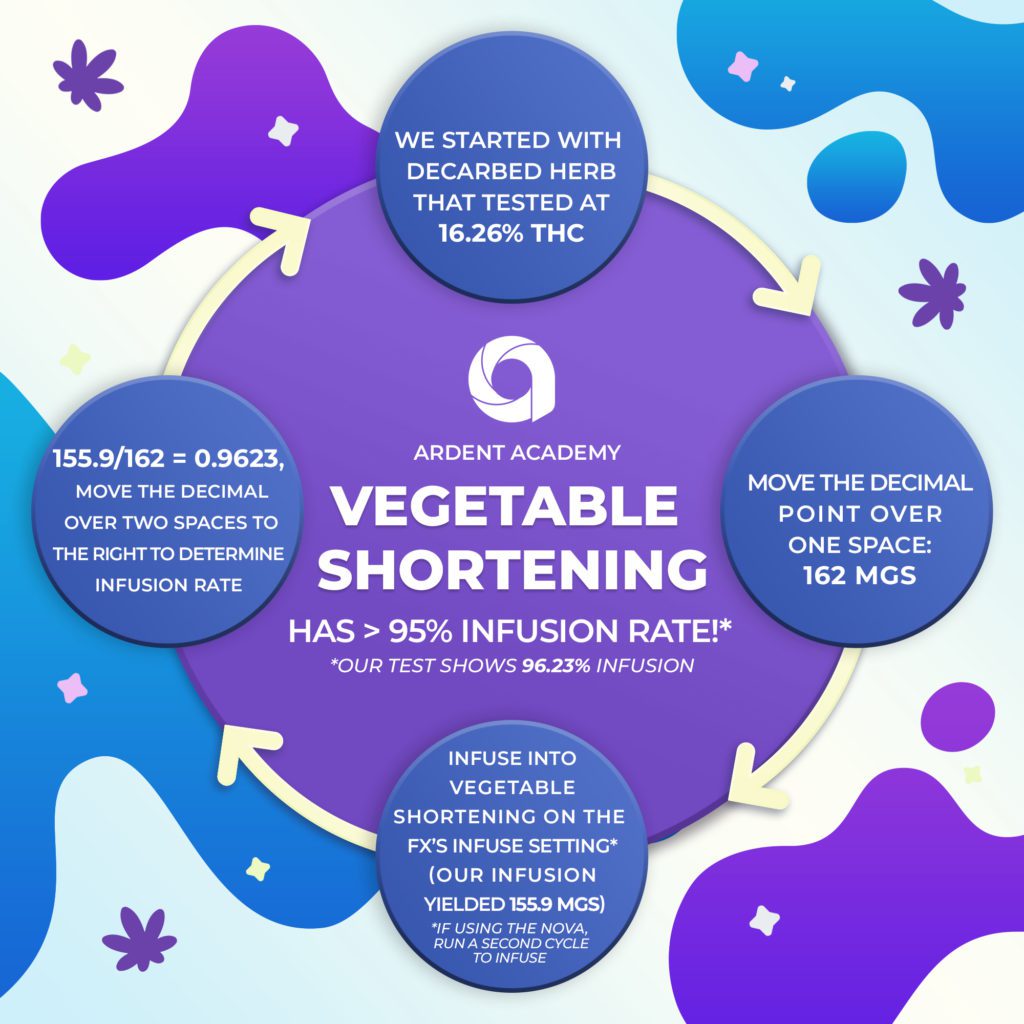
Vegetable shortening is an awesome alternative for those who don’t consume animal byproducts. Its long shelf life (of around 2 years, unopened) makes it an infusion medium that can be kept on hand at all times. But it’s more than an emergency sub-ingredient.
Vegetable shortening is a great plant-based replacement for lard or butter in recipes of all kinds, and works especially well in some of our favorite cookie and pie crust recipes. It yields a yummy, flaky end product.
It’s generally made up of a blend of hydrogenated (hydrogen added) and partially-hydrogenated vegetable oils including soybean, corn, and cottonseed. Because vegetable shortening lacks moisture and milk solids, it’s actually made of 100% fat.
This unique infusion medium also has a high smoke point (360 degrees Fahrenheit) making it an interesting choice for frying up tempuras, meats, and other vegetables.
Disclaimer: Vegetable shortening contains hydrogenated oils. When partially (as opposed to fully or non-hydrogenated,) vegetable shortening contains trans fats. In 2018, the FDA set restrictions on partially hydrogenated oils in food, banning them entirely. To make absolute sure you’re avoiding trans fats, opt for a non-hydrogenated vegetable shortening, or consider another infusion medium such as coconut oil.
Cannabis-Infused Vegetable Shortening Test Results
We began with THC-rich cannabis decarboxylated inside the Ardent FX on the A1 setting. We tested our decarboxylated material at MCR Labs, and found that after the activation cycle, our one-gram of cannabis tested at 16.26% max THC. So, let’s move the decimal point over one place to the right to determine how many mgs are in our gram of cannabis. Our one-gram nug yielded about 162 mgs of activated THC.
We then placed the decarboxylated cannabis inside an ounce of Crisco vegetable shortening and allowed it to infuse on the FX’s infuse setting. We also brought the infused vegetable shortening to MCR Labs to see how many mgs made it inside! It tested for 155.9 mgs of THC.
A very large amount of our initial 162 activated mgs have ended up in our infused vegetable shortening. We can figure out the infusion rate of vegetable shortening by dividing the 155.9 mgs found in our infusion by the 162 mgs that were placed inside the shortening. Then, move the decimal point over two places to the right.
Vegetable shortening has about a 96% infusion rate.

Great Uses for Cannabis-Infused Vegetable Shortening
- Biscuits
- Frosting
- Cakes
- Pie crust
- Cookies
- Bread
- Whoopie pies
- Refried beans
- Churros
- Sauteing
- Frying






